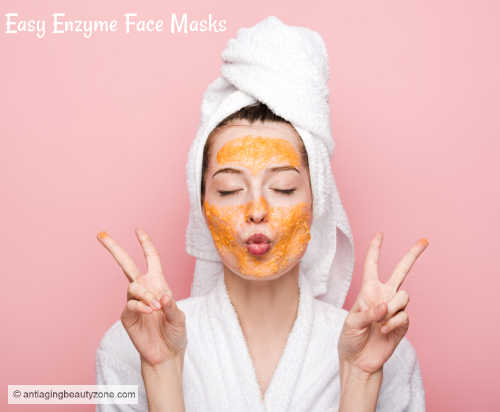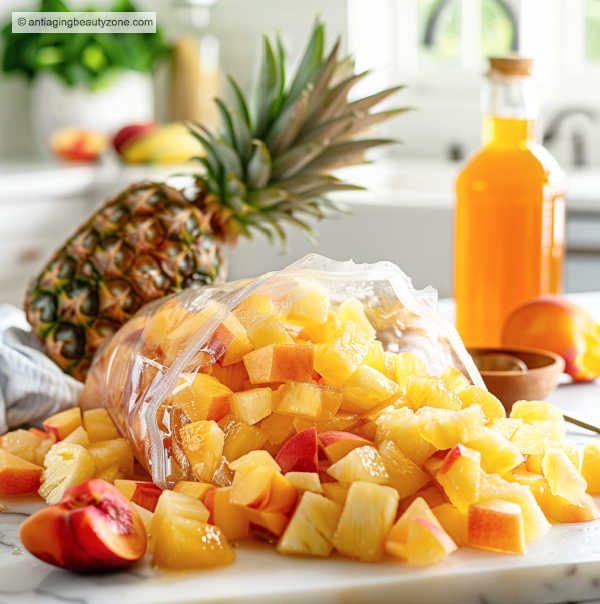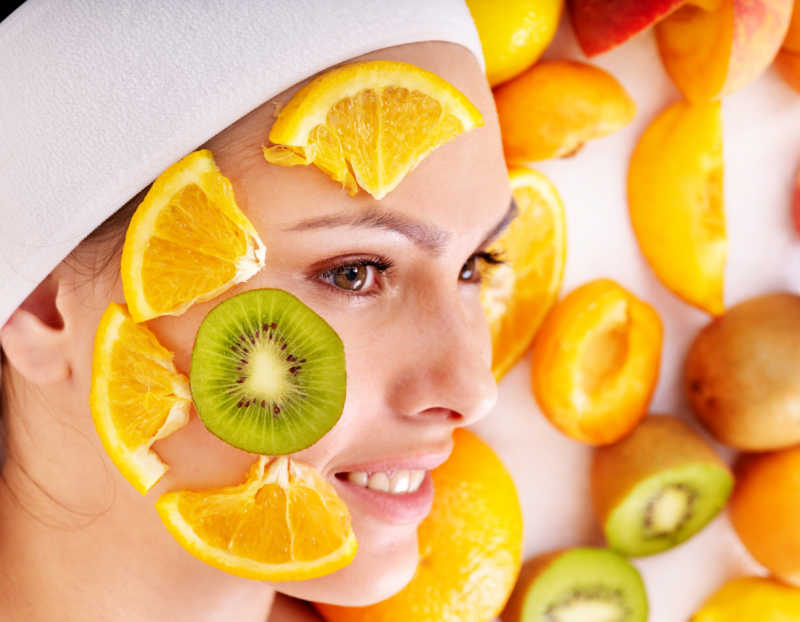As an Amazon Associate, I earn from qualifying purchases and other affiliate links. I only recommend products I’ve tried or researched.
- Home
- Skincare Guide
- Homemade Skincare
- Enzyme Benefits
Enzyme Facial Benefits: What Is It and Why It’s Great for Most Skin
Homemade enzyme masks are a gentle way to refresh your skin.
They’re budget-friendly and easy to make with fresh fruit.
Enzyme facials and enzyme peels both work by dissolving dead cells.
That means smoother, brighter, softer skin without harsh scrubbing.
Want to try one at home? See my enzyme face mask recipes.
Whether you try an enzyme peel at the spa or make a mask at home, the benefits are very similar. Let’s look at why they’re worth it.

What is an enzyme facial
 Frozen pineapple, papaya, peaches, and strawberries all contain enzymes that can be used to make homemade exfoliating face masks.
Frozen pineapple, papaya, peaches, and strawberries all contain enzymes that can be used to make homemade exfoliating face masks.An enzyme facial is a treatment that uses fruit-based enzymes for gentle exfoliation.
Papain (from papaya) and bromelain (from pineapple) are two of the most common.
These natural proteins break down dead skin cells on the surface. When rinsed away, your skin feels softer and looks healthier.
Want to compare with other mask types? See my guide on different types of facial masks.
Enzyme mask and peel benefits
Why try an enzyme facial, mask, or peel? Here are the biggest perks:
- Gentle exfoliation: Enzymes melt away dead skin cells without harsh scrubbing.
- Brightening effect: Regular use helps even skin tone and fade dark spots. Pair with daily SPF for best results. See my skin brightening tips and does sunscreen prevent aging.
- Smoother texture: Fine lines look softer. Skin feels refreshed and renewed.
- Anti-aging boost: Gentle turnover supports collagen for firmer, plumper skin.
- Hydration: Many enzyme mask recipes include honey or yogurt to soothe dryness.
- Sensitive-skin friendly: Enzyme facials are often better tolerated than strong acids.
Bottom line: The benefits of enzyme peels and masks are nearly the same. A pro peel may work faster, but DIY masks are gentle, natural, and easy to use at home.
Enzyme facial vs. Other exfoliants

Enzyme treatments are often called “natural peels.” They work like glycolic and lactic acid (AHAs), but in a milder way.
Scrubs can scratch the surface and acids may sting. Enzymes loosen dead cells without that irritation.
This makes enzyme masks a smart choice if you want results without downtime. Curious about exfoliation for aging skin? Read my tips on gentle exfoliation over 40.
DIY enzyme masks at home
You don’t have to visit a spa to enjoy enzymes.
Homemade masks are easy to make and budget-friendly.
Try these options:
- Papaya: Gentle, good starter mask.
- Pineapple: Brightens and refreshes dull skin.
- Pumpkin: Combines enzymes with natural acids.
- Berries: Mild exfoliation plus antioxidants.
Mash fresh fruit and mix with honey or yogurt. Apply for 5–10 minutes, then rinse and moisturize.
Want step-by-step recipes? Check out my enzyme face mask recipes.
Who should try enzyme facials?
Enzyme facials are safe for most skin types. They’re especially helpful if you want:
- Brighter, more even tone.
- Softer texture with fewer rough patches.
- A gentle way to refresh aging skin.
If your skin is very sensitive, patch test first. Start with shorter mask times and build up slowly.

Enzyme Facial Benefits: FAQ
Q: Should you wash your face before an enzyme peel?
Q: Should you wash your face before an enzyme peel?
A: Yes. If at home, wash with a gentle cleanser first. If at a spa, follow your skin pro’s instructions.
Q: Does your face peel after an enzyme facial?
Q: Does your face peel after an enzyme facial?
A: Usually no. One of the benefits is little to no downtime. Spa treatments may vary, so ask your provider.
Q: How often should you get an enzyme facial?
Q: How often should you get an enzyme facial?
A: Once or twice a week is fine for most people. If your skin gets irritated, space them out more.
Question: What are the benefits of an enzyme peel mask?
Question: What are the benefits of an enzyme peel mask?
Answer: Enzyme peel masks smooth texture, brighten dullness, and fade dark spots. They’re gentler than chemical peels and often hydrating too.
Question: Is an enzyme facial the same as an enzyme peel?
Question: Is an enzyme facial the same as an enzyme peel?
Answer: They’re very similar. Both use fruit enzymes to exfoliate. Spa peels are stronger, while DIY facials are gentler and easy to try at home.
Takeaway
Enzyme facials, masks, and peels offer gentle exfoliation, brightening, and anti-aging support.
They’re a natural way to refresh your skin and restore glow.
Whether you book a spa peel or whip up a quick fruit mask, the benefits are clear.
Consistent use leaves your skin softer, smoother, and more radiant.
Want More?
I share quick routines, beauty tweaks, and what’s working for me — straight to your inbox. Join the Club and get this free Cheek Shaper Video.
About the Author:
Linda Robison is a Facial Fitness Specialist and the founder of Anti-Aging Beauty Zone. With decades of hands-on experience, she shares practical, natural ways to lift and brighten mature skin—without expensive or invasive treatments.
Before you go ....
Please tap on the💙in the bottom right corner if you found this page helpful.
FOLLOW ME FOR MORE TIPS:
SHARE OR SAVE FOR LATER:




